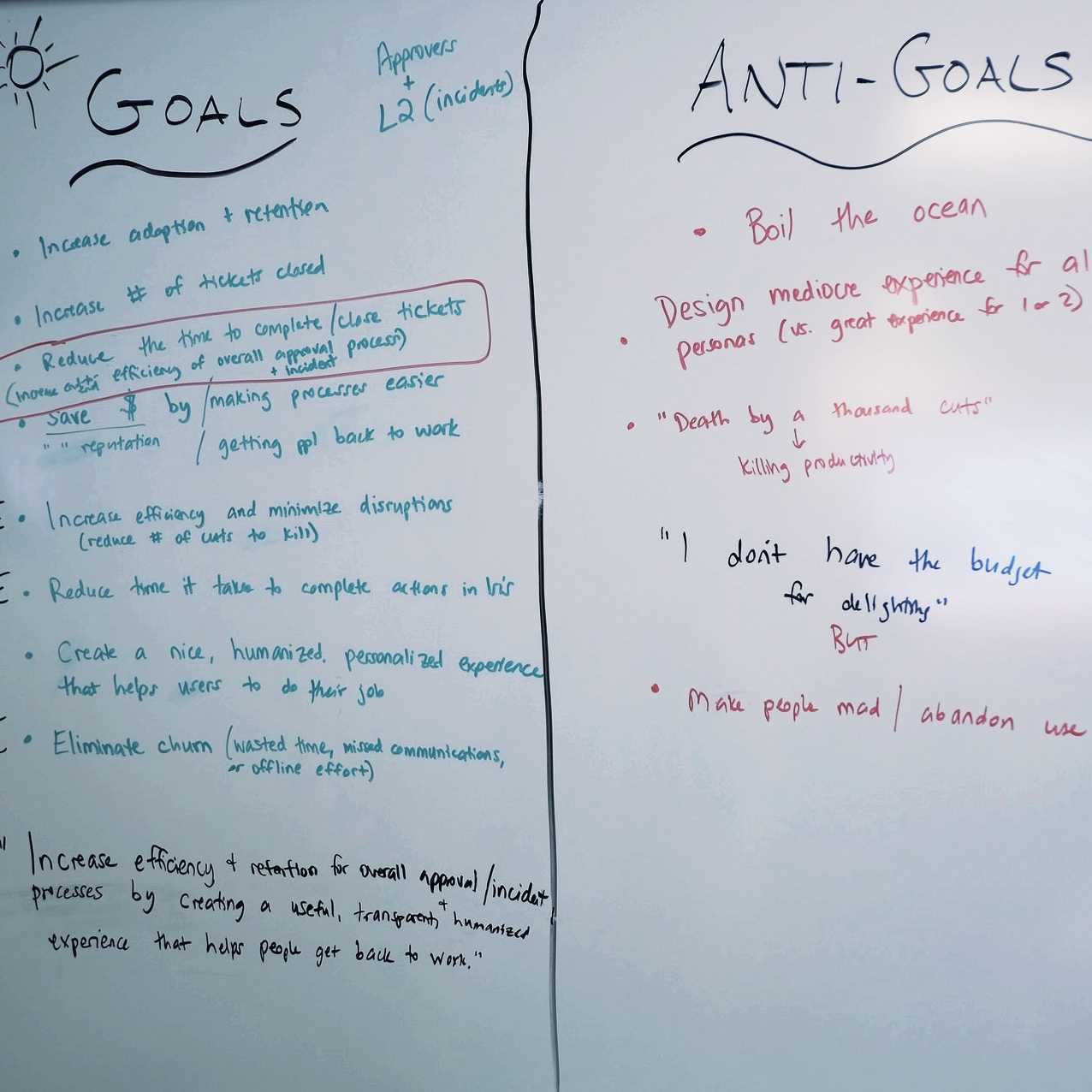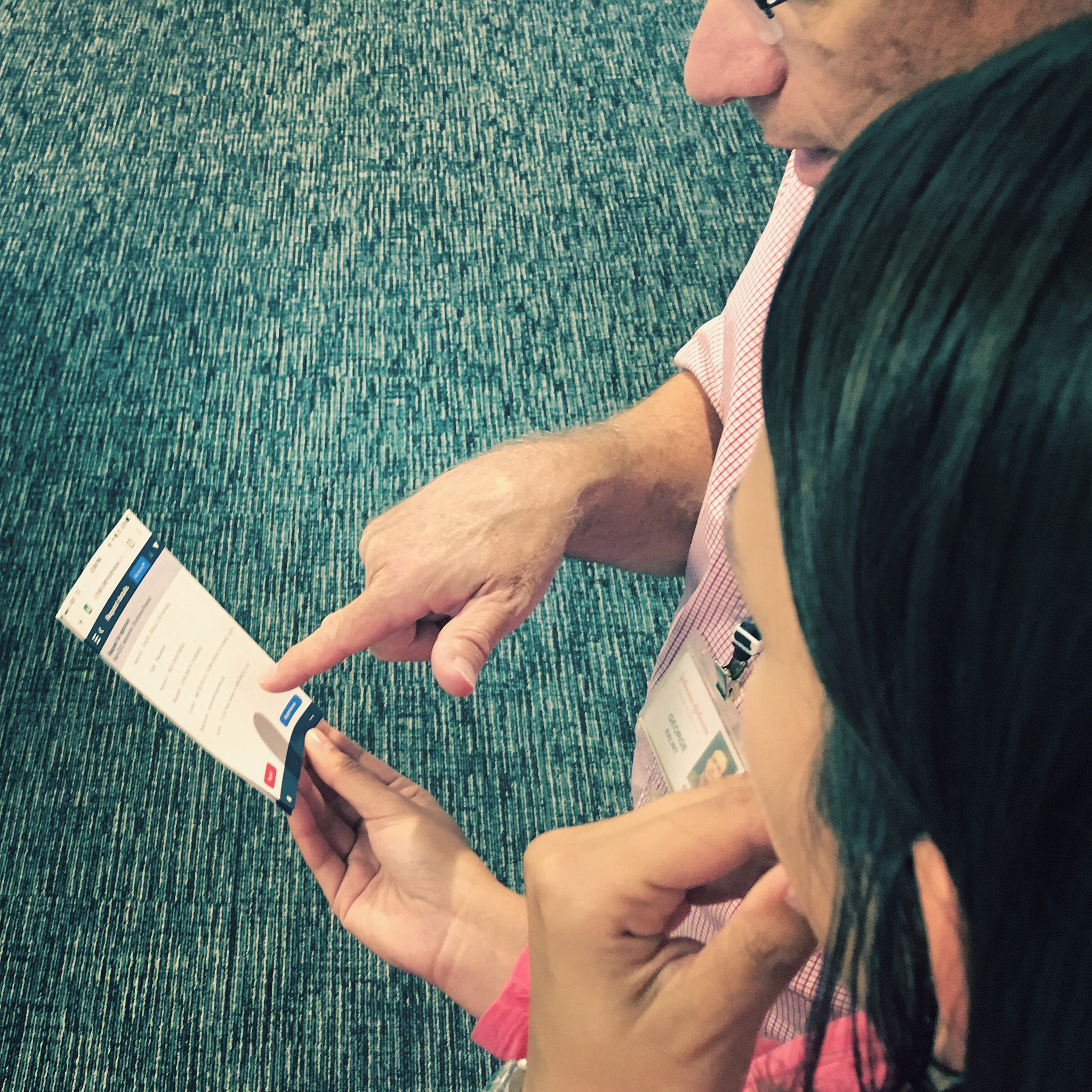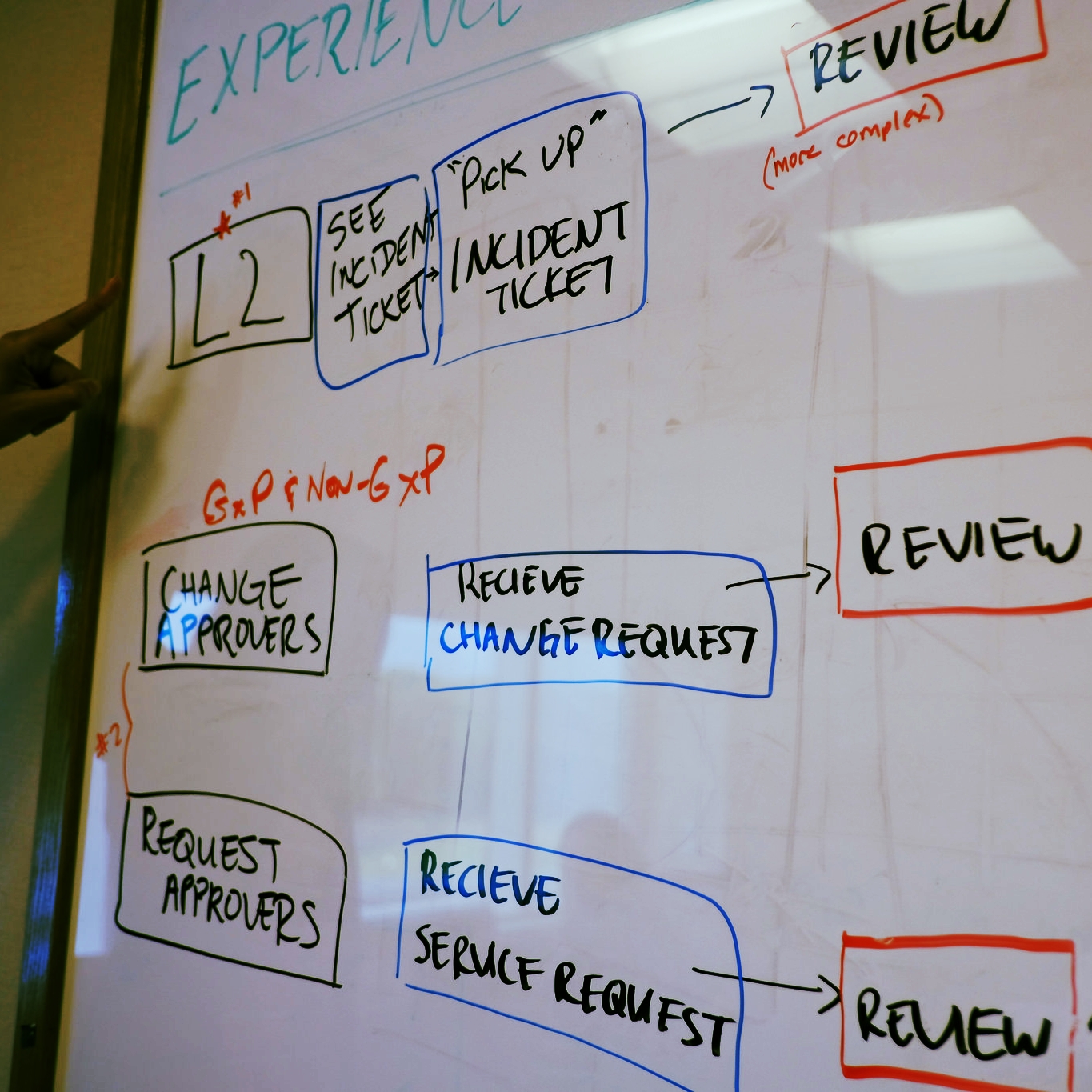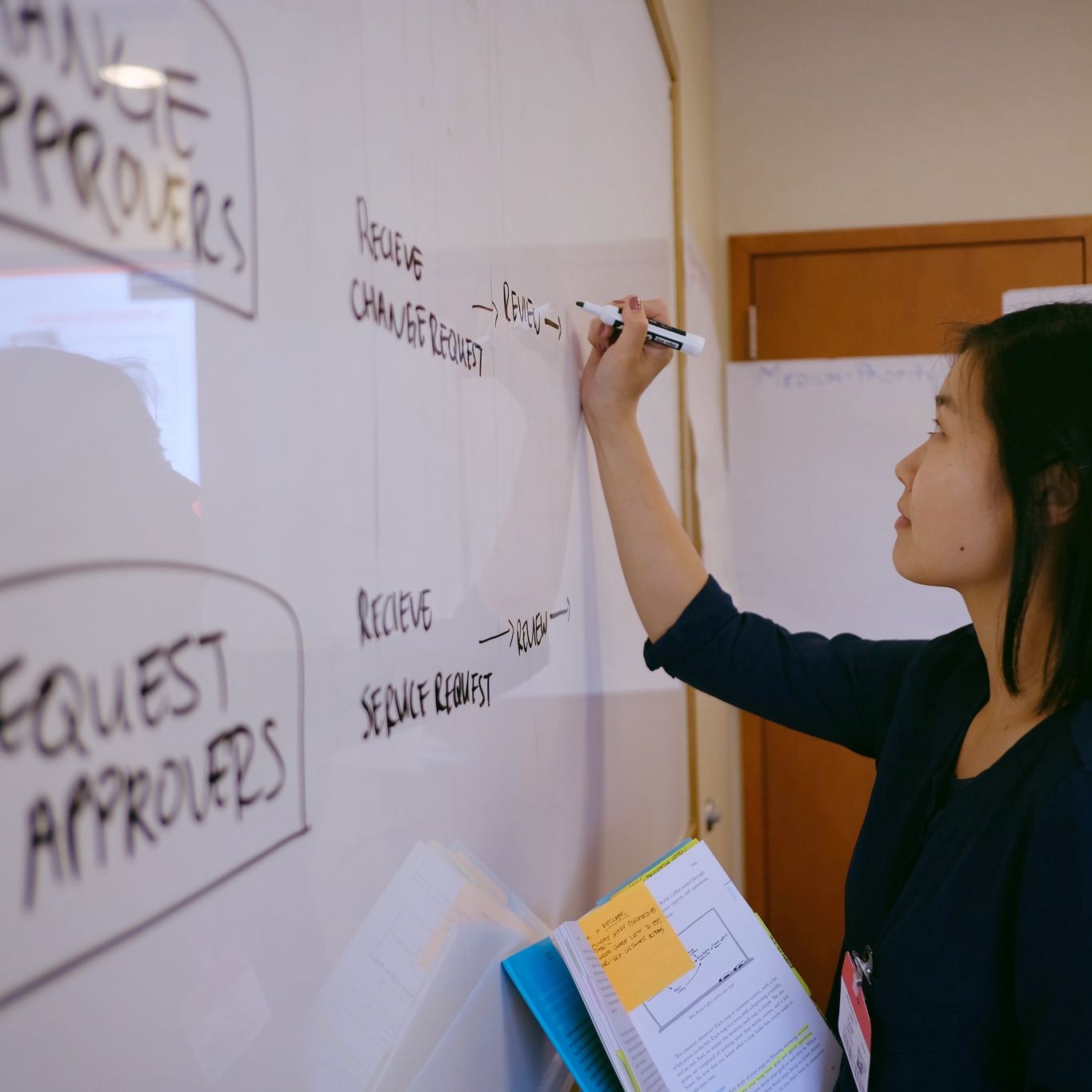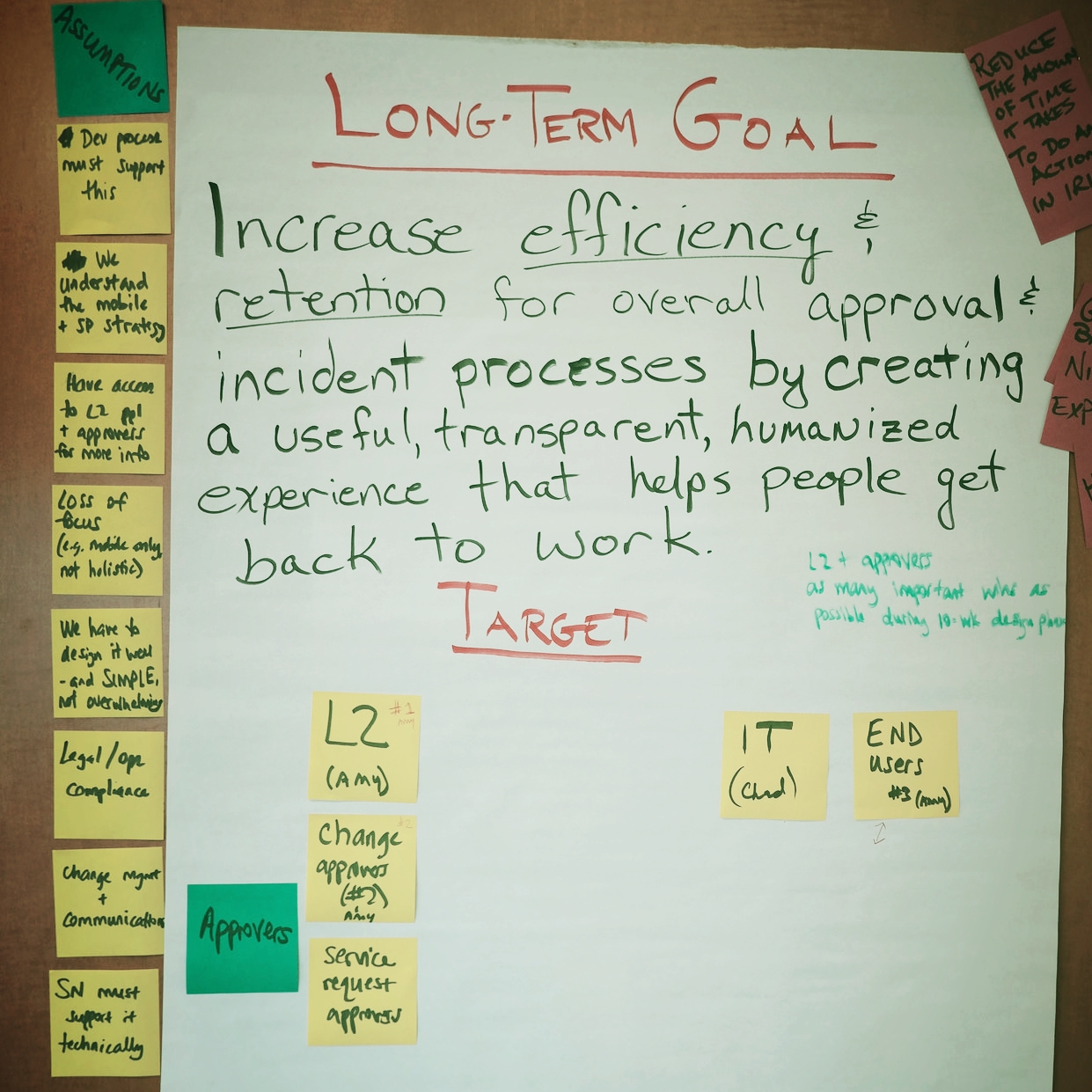Defining a mobile roadmap
Context
A major pharmaceutical company had apportioned funds for the development of a mobile solution in order to meet innovation goals at the executive level and make use of available mobile technologies through a content management system they were already using.
Challenge
Despite having a budget for the mobile roll-out, the client needed help determining which user groups to target, for which use cases, and on which platform (native, mobile web, responsive web) to use. They also needed alignment on goal-setting and success metrics.
Process
Our design sprint was condensed into three days, baked into longer discovery and design engagement. We spent two weeks before the sprint doing user research and technical discovery to identify distinct personas from three user groups, learned about their current processes, needs and desires, then ran a abbreviated design sprint with stakeholders to distill our findings and strategize mobile solution goals, assumptions, and success metrics. This was followed by several weeks of design and testing of the decided solution, where wireframes were produced and tested with our target user group.
Outcome
Although stakeholders went into the sprint assuming we would focus on a mobile web version of an internal product for almost 200,000 users, our discovery research revealed that there were very few valid use cases for this particular group of users. Instead, we determined that the highest ROI for the business was actually to create a native mobile app for a much smaller and more costly outsourced support team, contracted by the business. These users explained they often wasted time and money by physically traveling across a corporate campus to return to their desks and check their internal system for new assignments. Once we quantified the savings for providing this user group with a mobile solution, and charted the affordances of customizing an out-of-the-box native solution, we were able to quickly define the MVP feature set, and help draft a 2-year mobile roadmap for the business. Our resulting design phase was iterative, with feature enhancements driven by user testing and validation. Ultimately, the business saved a large percentage of their budget by not blindly investing in a mobile web product most end users didn't need, and instead focusing on the most beneficial target market and appropriate technology.
